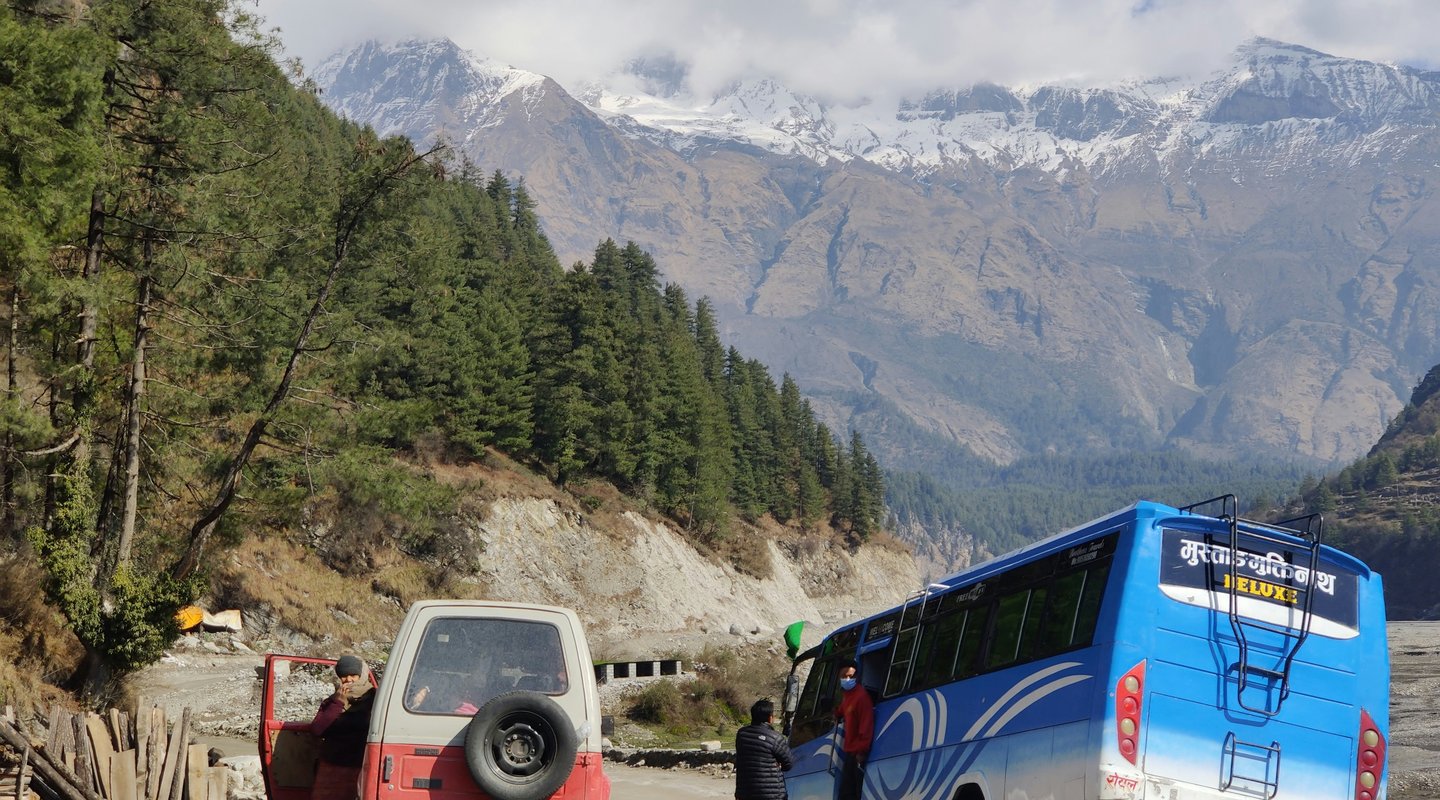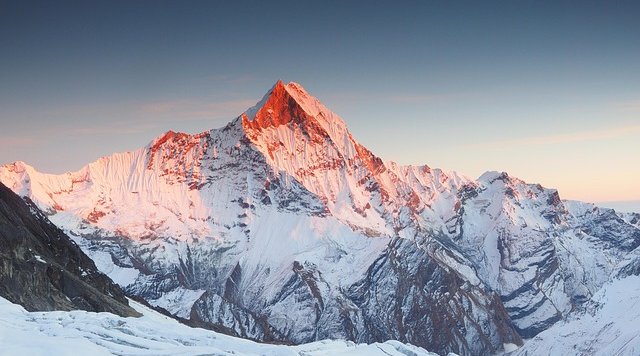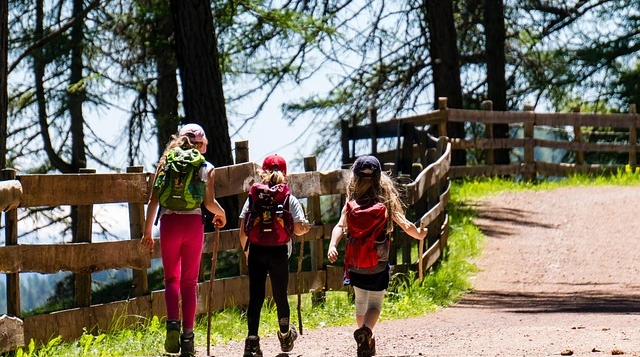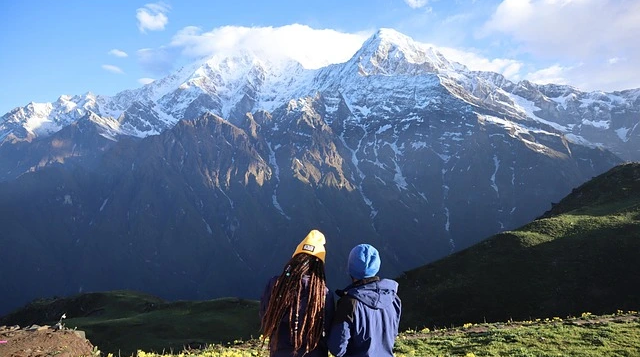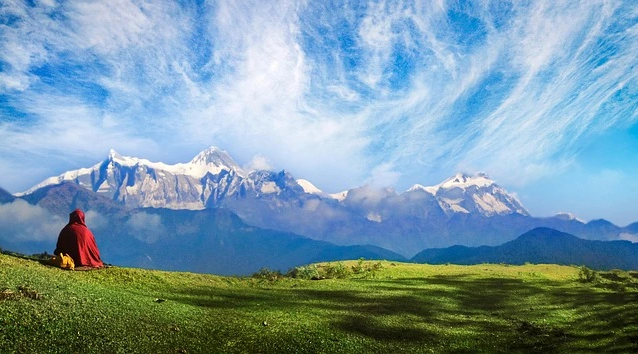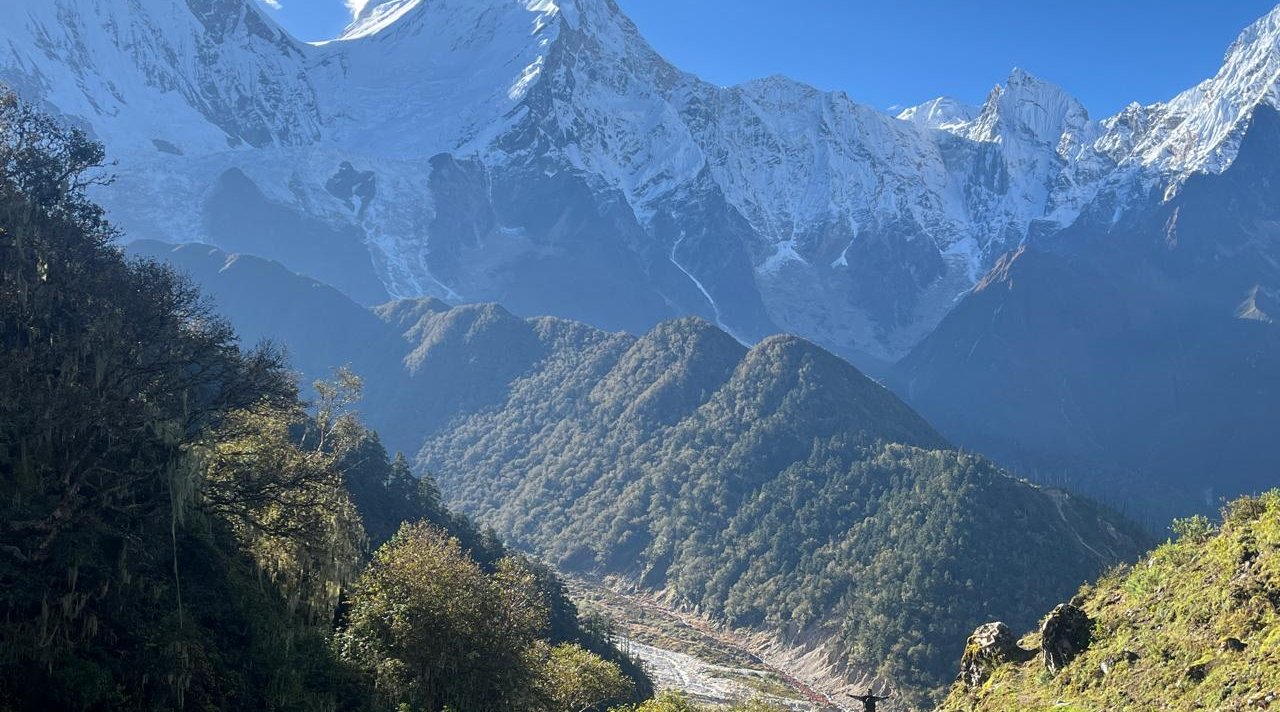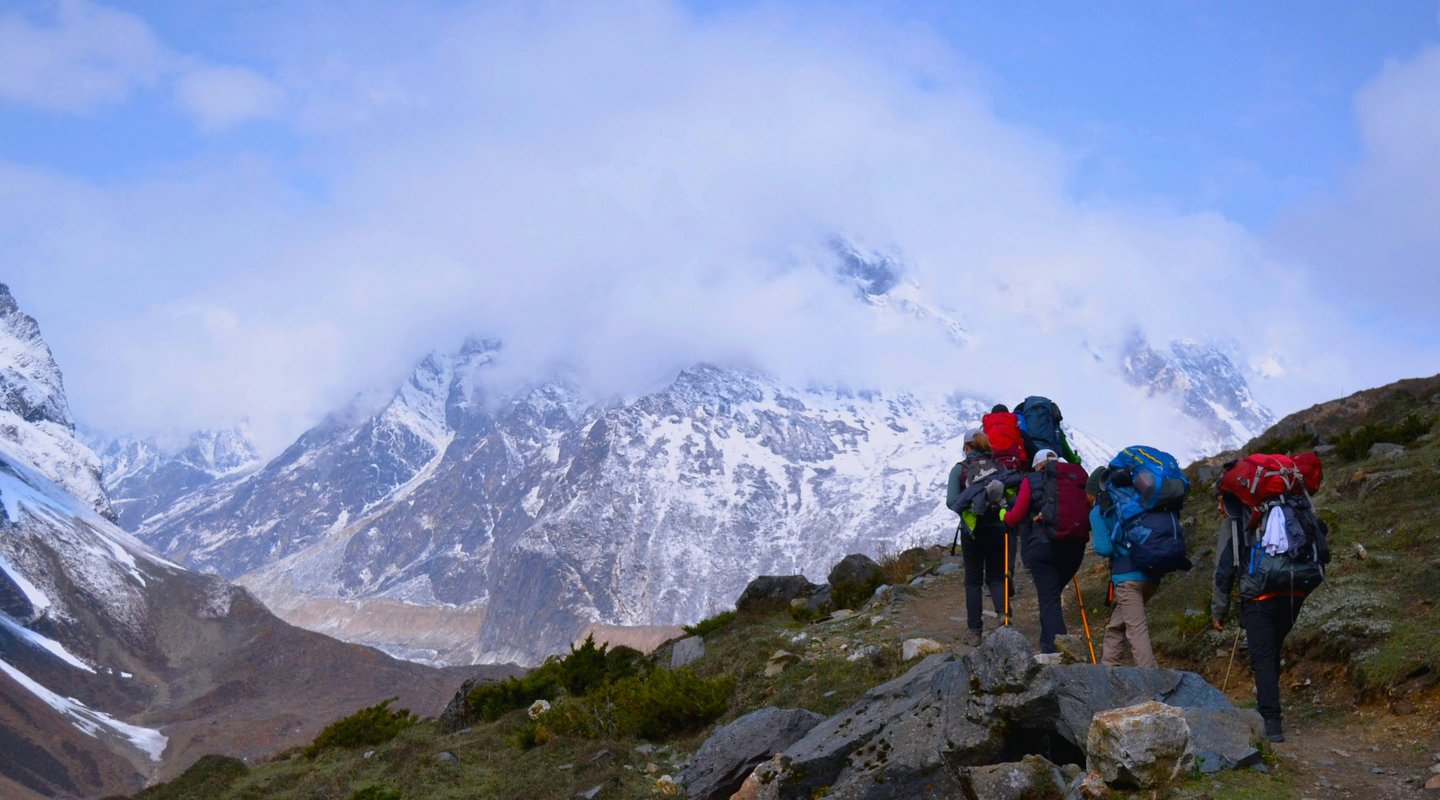Upper Mustang – known as the “Forbidden Kingdom” of Nepal – lies high in the Mustang District near the Tibetan border. It remained closed to outsiders until 1992 and is a controlled trekking region today. Upper Mustang’s unique Tibetan Buddhist culture, monasteries, and fragile desert landscapes are carefully protected by Nepal’s government. As a result, special permits are required to enter. These permits help preserve the region’s cultural heritage and pristine environment by limiting visitor numbers and enforcing strict rules. In practice, you must trek in an organized group with a licensed local guide and carry the required RAP (Restricted Area Permit), ACAP (Annapurna Conservation Area Permit), and TIMS (Trekkers’ Information Management System) papers at all times.
Why Permits are Needed for Upper Mustang
Upper Mustang’s permit system serves several purposes. First, it protects a unique culture: the ancient Kingdom of Lo (Lo Manthang) has Tibetan monasteries and heritage sites that authorities want to shield from mass tourism. Second, the area is a sensitive border zone with Tibet (China), so checkpoints help monitor movement and ensure security. Third, the arid ecosystem here is very fragile. Strict limits on permits help minimize environmental impact on Upper Mustang’s wildlife and landscapes. Finally, permit fees directly support local communities – funding schools, clinics and trail maintenance. In short, obtaining an Upper Mustang permit is mandatory by law, and trekking without one can lead to hefty fines or ejection from Nepal.
Upper Mustang Permit for Nepali Citizens
While Nepali nationals do not need a visa, Nepalese citizens still require the special Restricted Area Permit (RAP) and ACAP to trek above Kagbeni into Upper Mustang. In general, Nepali trekkers must follow the same rules as foreigners: you must travel in a group of at least two with a licensed guide, and you cannot take a solo trek. The permit application is handled by a registered trekking agency, which submits your details to the Department of Immigration.
- Costs (in NPR): Nepali citizens pay a nominal fee compared to foreigners. For example, the Annapurna Conservation Area Permit is only about NRs 200 per person. The Upper Mustang RAP fee for Nepalis is about NPR 1,000 per day (roughly USD 8/day) – far lower than the USD 500 charged to foreigners. (Children under 10 go free.) Note: these local fees are payable in Nepalese rupees.
- Documents & process: Nepali trekkers present a valid Nepalese citizenship certificate or passport, recent passport-size photos, and a completed application (via the agency). The agency applies on your behalf at the Immigration Office in Kathmandu or Pokhara. Unlike foreigners, you don’t need a visa, but you do need a valid photo ID.
- Local rules: Trekkers must follow the designated trail and cannot change routes without approval. Individual trekking is strictly forbidden – groups must have at least two people plus a guide. The group must provide daily wages, insurance. and gear for any Nepali guides or porters accompanying them. In practice, a licensed agency will organize all of this.
Upper Mustang Permit for Indian Citizens
Indian nationals enjoy open-border entry into Nepal, but Upper Mustang is a restricted area, so Indians also need permits. The key differences are in the fee structure, since Indians are treated as SAARC nationals (South Asian association).
- Fees: Indians pay the same USD rate for the RAP as other foreigners: US$500 per person for the first 10 days, then US$50 per extra day. However, Indians (unlike other foreigners) can pay in Nepali rupees at the equivalent rate. For conservation fees, Indians pay lower ACAP/TIMS charges. For example, the ACAP fee for a SAARC national is around NPR 1,000 (US$10) for the entire trek (much less than the NPR 3,000 foreigners pay). Similarly, the TIMS card costs about NPR 1,000 ($10) for an Indian group (vs NPR 2,000 for foreigners).
- Process: Like everyone else, Indian trekkers must apply through a licensed Nepalese trekking agency. They need a valid Indian ID (passport or voter ID) and photos. The agency submits your details and itinerary to Immigration. As Indians do not need a Nepal visa, you’ll use your Indian passport or ID as proof of identity when applying.
- Rules: All rules – minimum group size of 2, licensed guide, no off-route travel – are identical for Indians. In practice, Indians follow the same Upper Mustang travel rules as foreigners: you must hire a guide, pay the entry fees, and carry the permits at checkpoints.
Upper Mustang Permit for Foreign Nationals
Foreign visitors (non-SAARC) face the highest fees and strictest controls in Upper Mustang. Trekkers must obtain three permits: the Restricted Area Permit (RAP), the ACAP conservation permit, and a TIMS card.
- RAP (Restricted Area Permit): This is the main permit for Upper Mustang. It costs US$500 per person for the first 10 days, plus US$50 per person for each additional day. The permit is date-specific and non-transferable. It must be applied for through a Nepalese agency – individuals cannot apply on their own. A minimum group of two is required; solo trekkers must either join a group or pay for a “ghost” permit (effectively doubling the fee). Entry beyond Kagbeni requires showing this permit at checkpoints.
- ACAP (Annapurna Conservation Area Permit): Since Upper Mustang lies within the Annapurna Conservation Area, you also need an ACAP permit. For foreign trekkers, the ACAP fee is about NPR 3,000 (roughly US$25) per person. This permit has no duration limit (you pay once for the whole trip). You obtain ACAP in Kathmandu (Tourism Board office, Bhrikutimandap) or Pokhara (ACAP office, Lakeside).
- TIMS Card: A TIMS (Trekkers’ Information Management System) card is also required if you are trekking (though it’s waived if you fly both in and out via Jomsom). For foreigners, a group TIMS card costs about NPR 2,000 (US$20). The agency will issue your TIMS along with the permits.
- Application process: The agency will handle all paperwork. Typically, you submit copies of your passport and visa (at least 6 months validity), photos, a detailed itinerary, and a guarantee letter from the agency. The permits are usually ready in 2–3 working days. You must pay the fees (in USD or NPR) at the Immigration Department in Kathmandu or Pokhara. Once issued, the permit will have your entry/exit dates and locations.
- Rules for foreigners: Strictly no solo trekking – the group rule applies to all. A licensed guide is mandatory at all times in Upper Mustang. Follow the authorized route exactly. Officials check permits at Kagbeni on entry and at Lo Manthang on exit. Any attempt to enter Upper Mustang without the proper permits or a guide is illegal and can result in fines or arrest.
Key Differences in Permits
- Cost: Nepali citizens pay a much smaller local fee (e.g.,~NPR 1,000/day for RAP) compared to Indians and foreigners. Indian (SAARC) trekkers pay the full RAP in USD but get lower ACAP/TIMS fees (about NPR 1,000). Foreigners pay the highest rates (USD 500 for 10 days, plus higher ACAP/TIMS fees).
- Currency: Foreigners must pay most fees in USD (or NPR equivalent). Indians and Nepalis can simply pay in local currency.
- Visas: Nepalis and Indians don’t need a Nepal visa; foreigners must have a valid tourist visa. However, all must register the visa number on the permit application.
- Documentation: Nepalis use their national ID (citizenship card); Indians use a valid Indian ID; foreigners need a passport. Everyone needs passport-sized photos and a detailed itinerary.
- Permits required: Nepali, Indian, and foreign travelers all need the RAP (Restricted Area Permit) to enter Upper Mustang, plus the ACAP and TIMS if trekking. (The only difference is in fee amounts.) Children under age 10 are exempt from fees across all categories.
How and Where to Apply
All Upper Mustang permits are issued by the Government of Nepal through licensed local agencies – you cannot get them “on the trail.”
- Choose a licensed trekking company: The easiest way is to book with a Nepal-registered trekking agency (like Himalayan Hero). They handle the permit process for you.
- Gather documents: Prepare your passport (or ID), Nepal visa (for foreigners), two photos per person, and a detailed itinerary.
- Apply in Kathmandu or Pokhara:
- ACAP: Go to the NTB office in Kathmandu (Bhrikutimandap, open 10 AM–4 PM) or the ACAP counter in Pokhara. Submit your form, photos, and fee (by cash or bank voucher) to get the Annapurna Conservation Area Permit on the spot.
- RAP: The agency submits an online application at the Immigration Office in Kathmandu or Pokhara. You must also present your passport copies, the Nepalese visa copy (for foreigners), and the itinerary to immigration. Once approved (in about 2–3 days), you pay the fee ($500 or NPR equivalent) and receive the Restricted Area Permit.
- TIMS Card: Your guide or agency will issue TIMS at the NTB counter when you pay the ACAP or RAP fee.
- Check dates: Permits are date-specific. Make sure your entry and exit dates match your itinerary. If you need to extend your stay, you must apply for an extension (and pay the extra USD 50/day) before your current permit expires.
In summary, you apply through the Department of Immigration (DOI) in Kathmandu or Pokhara, with support from your trekking agency. The official contacts for more information are the Nepal Tourism Board (Bhrikuti Mandap) and Nepal Immigration.
Tips for Travelers
- Best Seasons: The finest weather in Upper Mustang is spring (March–May) and autumn (Sept–Nov). Days are clear and temperatures are mild. Winters are cold (heavy snow at high passes), and the summer monsoon brings occasional rain (though Mustang is in a rain shadow). Plan your trek accordingly.
- Apply Early: Especially during peak seasons, apply for your permits at least 2–4 weeks in advance. Government offices close on weekends and holidays, so allow extra time. Agents often advise securing permits before arriving in Nepal to avoid delays.
- Prepare Documentation: Always carry extra passport-size photos, photocopies of your passport/ID and visa, and cash for permit fees (US dollars or NPR). Keep copies of your permits with you. Missing or incorrect documents can cause the permit process to fail.
- Group and Guide: Remember, you cannot trek solo. Book with an experienced company (like Himalayan Hero Adventures) that will pair you up if needed. Verify your guide is licensed and that you adhere to the official route.
- Respect Local Customs: Upper Mustang is culturally Tibetan. When visiting monasteries (like those around Lo Manthang), dress modestly (cover shoulders/knees) and ask before taking photos. Following local rules and showing respect will ensure a smooth trip.
- Health & Gear: Altitude can be high (up to ~3,800 m). Bring warm clothing for cold nights and sunscreen for the dry sun. Carry any required medications. Travel insurance that covers trekking rescues is strongly recommended.
- Avoid Permit Problems: Never attempt to enter Upper Mustang without the right permits. Check your permit start/end dates carefully; no changes are allowed once issued. If in doubt, consult Nepal’s Immigration office or your trekking agent rather than risking fines or arrest.
For example, monasteries like Lo Gekar Monastery demand respect – cover up and remove hats when inside. As one traveler’s guide notes, don’t try to “sneak” in without permits: police at checkpoints will strictly enforce the rules. In practice, planning and staying organized is the best way to avoid headaches.
FAQs For Upper Mustang Permit Guide
- Is a permit required for Nepali citizens to trek in Upper Mustang?
Yes. Upper Mustang is a Restricted Area, and Nepalese nationals must also obtain a special permit (via a trekking agency) to go beyond Kagbeni. The fees are much lower for Nepalis, but you still need the RAP plus ACAP (and TIMS if trekking by land). Permits cannot be bypassed for locals.
- Do Indian nationals need a permit for Upper Mustang?
Absolutely. Even though Indians don’t need a visa for Nepal, they must get the Restricted Area Permit (RAP) to trek in Upper Mustang. The cost for Indians is the same as for other foreigners (US$ 500 for 10 days), and a guide is mandatory. Indians also pay lower ACAP/TIMS fees as SAARC nationals.
- How much does the permit cost?
It depends on nationality: For foreign trekkers, the Upper Mustang permit is US$ 500 per person for 10 days (then US$ 50/day extra). Indian trekkers pay the same USD rate (but in NPR). Nepalese pay only about NPR 1,000 per day. On top of that, ACAP costs ~NPR 3,000 (foreigners) or ~NPR 1,000 (SAARC).
- Where do I apply for the permit?
In Nepal, permits are issued in Kathmandu or Pokhara only. ACAP/TIMS are obtained at the Nepal Tourism Board or the ACAP office. The RAP is issued by the Department of Immigration in Kathmandu or Pokhara, but applications must be made through a licensed trekking agency. You cannot apply at a trail checkpoint.
- Can I trek solo or get a permit on my own?
No. Solo trekking is not allowed. Permits are only issued to groups of two or more, accompanied by a licensed guide. Individual travelers must book through an agency, which may pair you with another trekker if needed. Some agencies offer a “ghost” permit (charging double) so a solo traveler can satisfy the two-person rule, but a guide is still mandatory.
- What if I go by jeep or flight?
Even for motorbike or jeep tours, the Restricted Area Permit is needed to enter Upper Mustang (Lo Manthang). Flying to Jomsom and then trekking means you still need the RAP (you enter on foot). The only permit you can skip is the TIMS card if you fly both in and out by plane, but most travelers still get one in case plans change.
- How long does the permit last?
Typically, the RAP covers exactly the dates you applied for. The initial permit is valid for 10 days, but you can pay USD 50/day to extend it. ACAP and TIMS stay valid for the duration of your trek. Always double-check that your visa in Nepal covers the same period as your permits.
Conclusion
Trekking to Upper Mustang is a once-in-a-lifetime adventure, but the permits and rules are strict by design. Understanding the costs and requirements in advance will make your trip hassle-free. For hassle-free planning, consider booking with a reputable Nepalese operator (like Himalayan Hero Adventures). They can arrange all permits (RAP, ACAP, TIMS) for Nepali, Indian, or foreign travelers, and provide experienced guides who know the rules.
Ready to explore the Forbidden Kingdom? Contact Himalayan Hero Adventures for a fully guided Upper Mustang trek, and let our team handle the permits and logistics for you.

